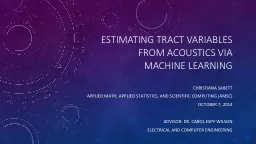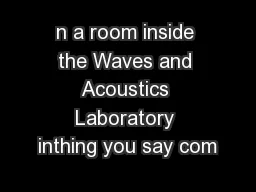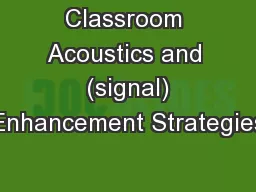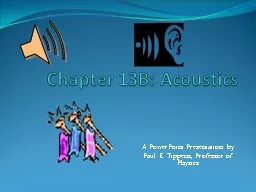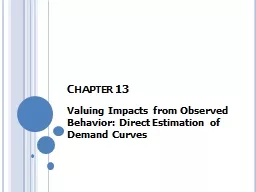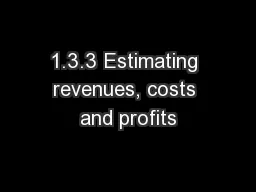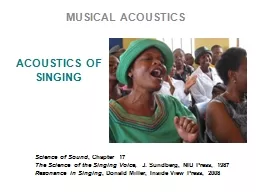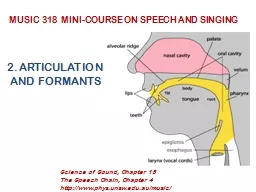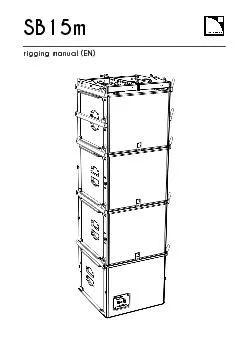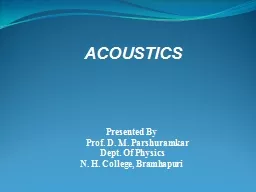PPT-Estimating Tract Variables from acoustics via
Author : tatyana-admore | Published Date : 2016-04-08
machine learning Christiana Sabett Applied math applied statistics and scientific computing amsc October 7 2014 Advisor dr carol espyWilson Electrical and computer
Presentation Embed Code
Download Presentation
Download Presentation The PPT/PDF document "Estimating Tract Variables from acoustic..." is the property of its rightful owner. Permission is granted to download and print the materials on this website for personal, non-commercial use only, and to display it on your personal computer provided you do not modify the materials and that you retain all copyright notices contained in the materials. By downloading content from our website, you accept the terms of this agreement.
Estimating Tract Variables from acoustics via: Transcript
Download Rules Of Document
"Estimating Tract Variables from acoustics via"The content belongs to its owner. You may download and print it for personal use, without modification, and keep all copyright notices. By downloading, you agree to these terms.
Related Documents

